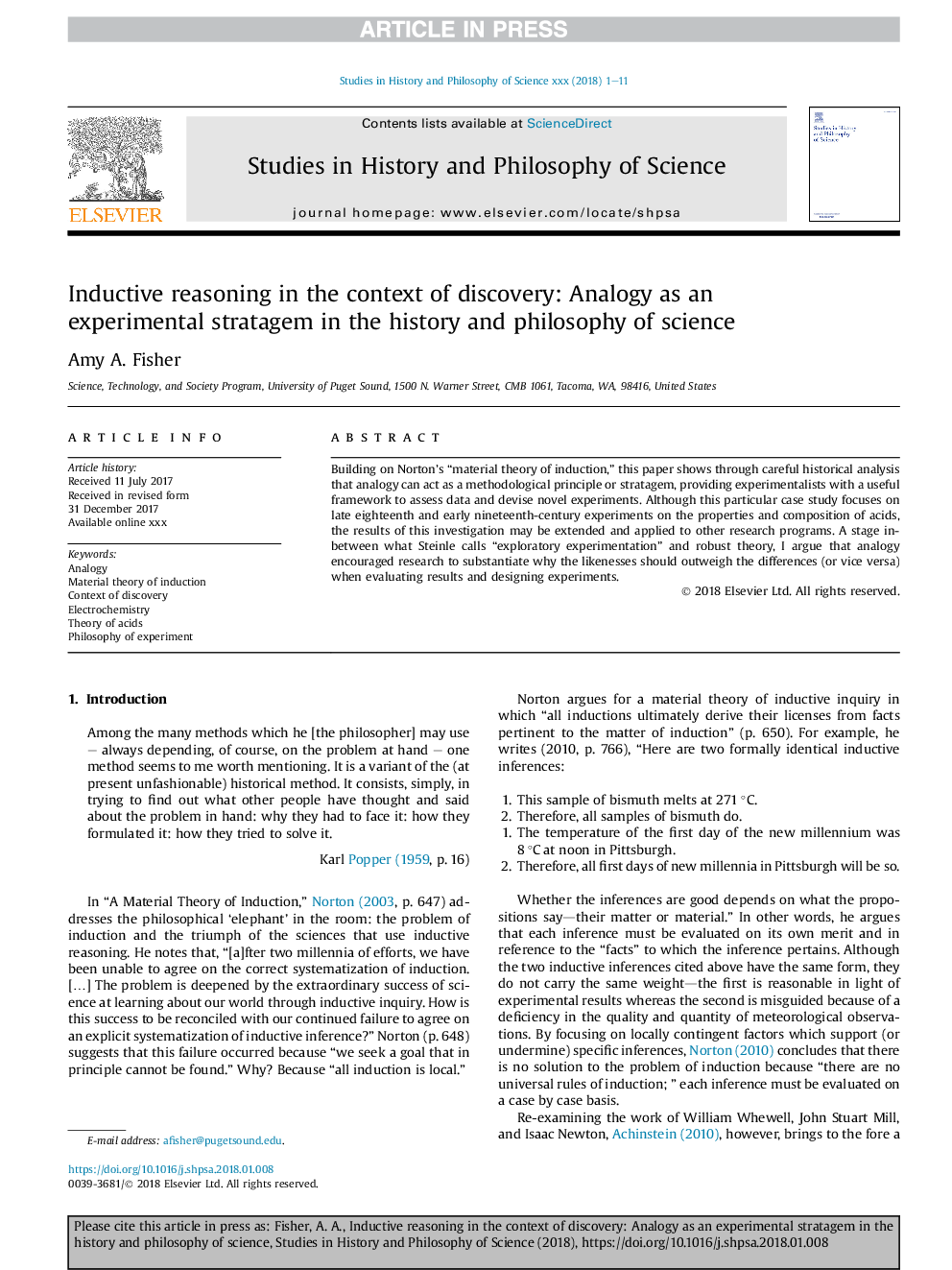| Article ID | Journal | Published Year | Pages | File Type |
|---|---|---|---|---|
| 7551563 | Studies in History and Philosophy of Science Part A | 2018 | 11 Pages |
Abstract
Building on Norton's “material theory of induction,” this paper shows through careful historical analysis that analogy can act as a methodological principle or stratagem, providing experimentalists with a useful framework to assess data and devise novel experiments. Although this particular case study focuses on late eighteenth and early nineteenth-century experiments on the properties and composition of acids, the results of this investigation may be extended and applied to other research programs. A stage in-between what Steinle calls “exploratory experimentation” and robust theory, I argue that analogy encouraged research to substantiate why the likenesses should outweigh the differences (or vice versa) when evaluating results and designing experiments.
Keywords
Related Topics
Social Sciences and Humanities
Arts and Humanities
History
Authors
Amy A. Fisher,
